Storage stability of roasted nuts and stabilization strategy using natural antioxidants
September 2016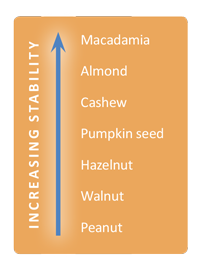
Nuts and seeds have been considered valuable food commodities since prehistoric times. However, they are susceptible to oxidation because of their high fat content and high percentage of polyunsaturated fatty acids (PUFA). Improving the stability of nuts and products containing nuts has been a big challenge to the food industry. Nut stability is impacted by oil content, and especially by fatty acid composition. For example, a macadamia nut with a high fat content is more stable than the less oily walnut which has much higher PUFA in the oil. Micronutrients also affect stability. The high amount of tocopherol in an almond protects it from oxidation even though it has moderately high oil and PUFA content.
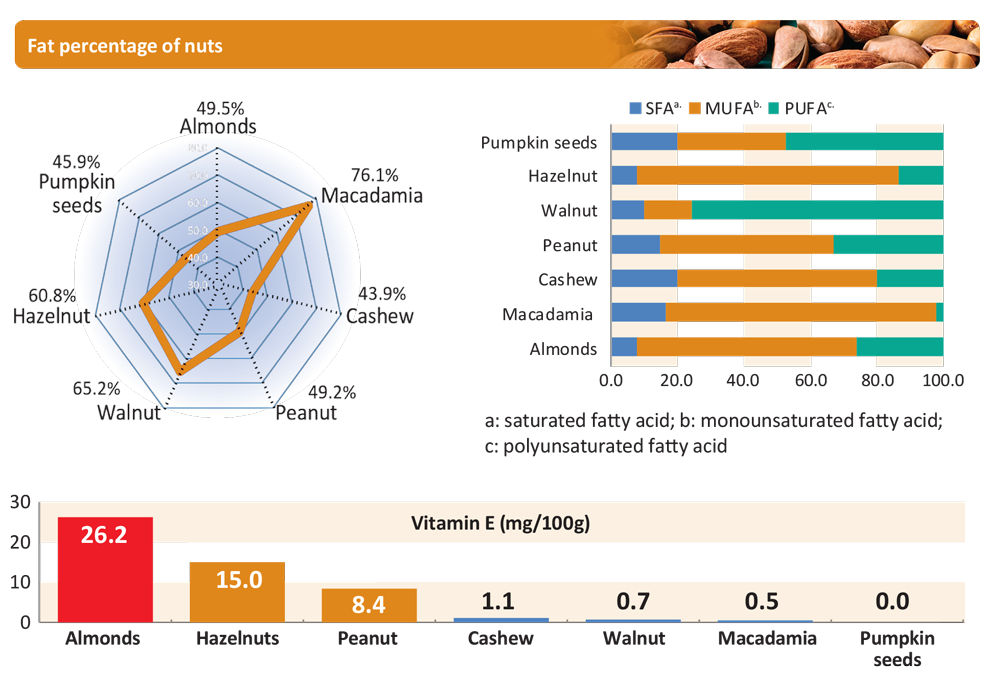
The forms of hazelnuts greatly affect their stability. Clear packaging introduces light as an oxidation catalyst and poses new challenges to the shelf life of nuts. This is especially true for nuts and seeds that contain photosensitizers such as pumpkin seeds.
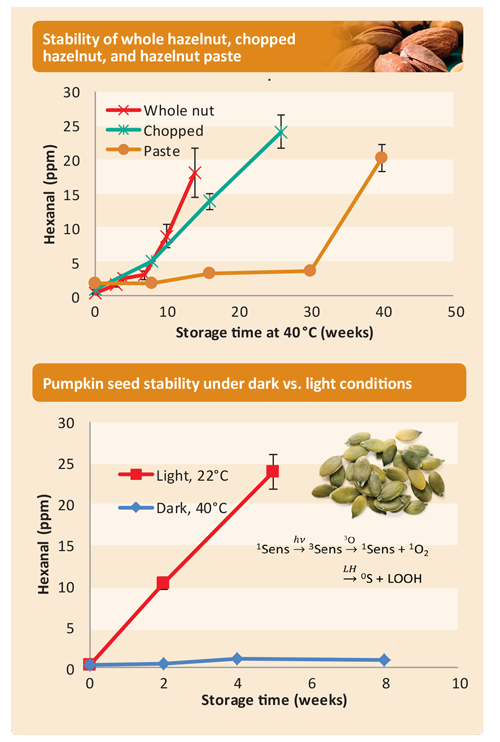
Among all oxidation products detected in rancid nuts, hexanal is the major marker. Natural extractive of rosemary proved to be an excellent antioxidant for stabilizing roasted nuts, either through topical application or through brine treatment.
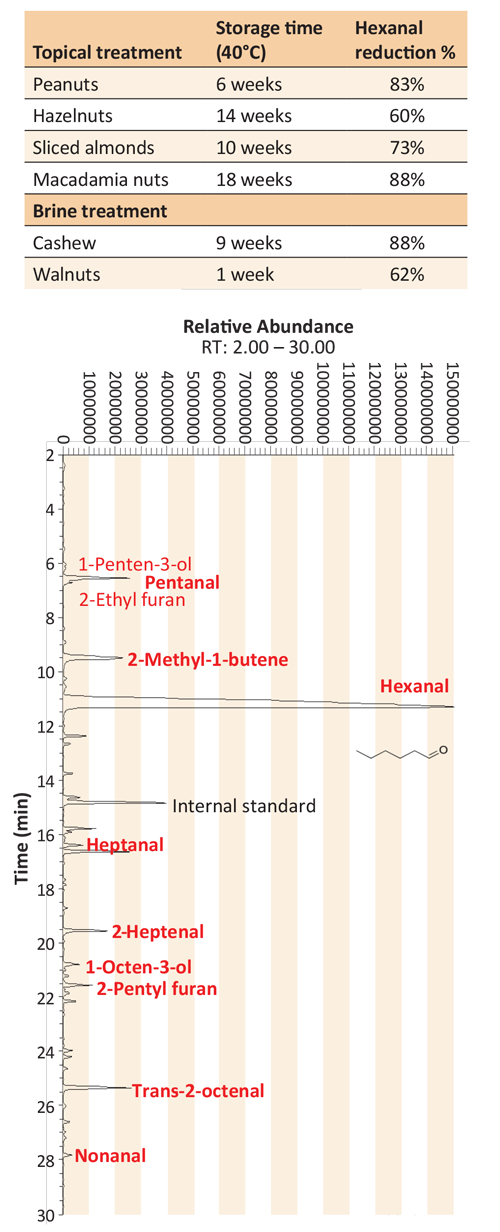
When and where antioxidants are added is important. Generally, the earlier they are applied, the better the protection. However, if the nuts are to be cut or chopped, adding antioxidants to the final product form is recommended in order to protect exposed surfaces.
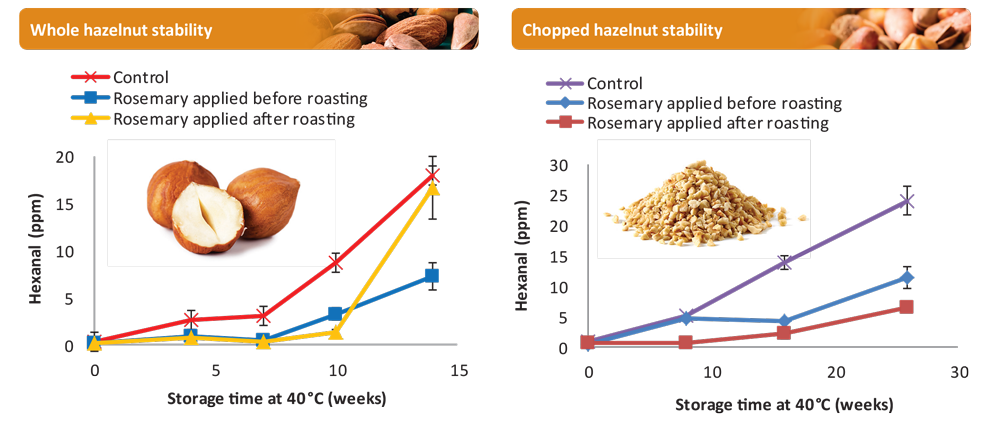
 Light has great impact on the rate of oxidation of nuts. When a single antioxidant fails to do the job, the use of antioxidant combinations is required for optimum protection.
Light has great impact on the rate of oxidation of nuts. When a single antioxidant fails to do the job, the use of antioxidant combinations is required for optimum protection.
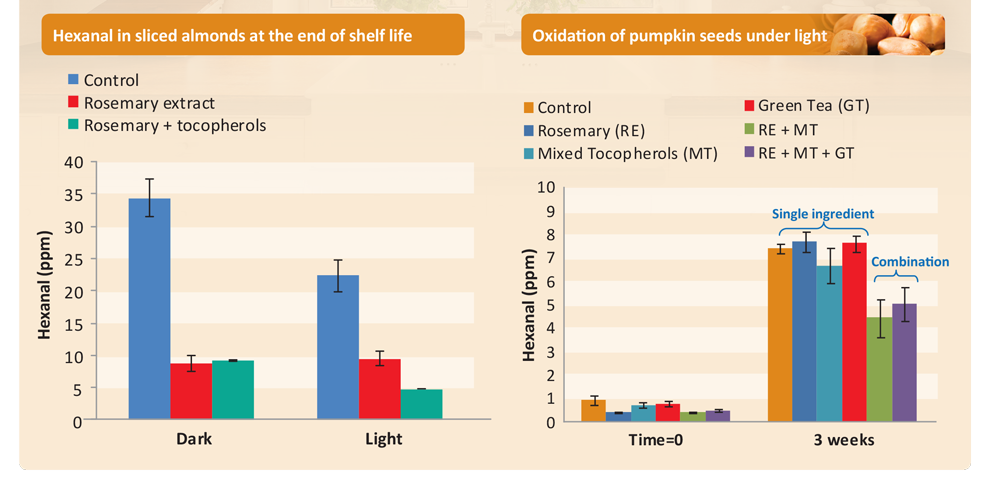
Cindy Tian is a lead scientist at Kalsec, Inc. She can be contacted at CTian@kalsec.com.

